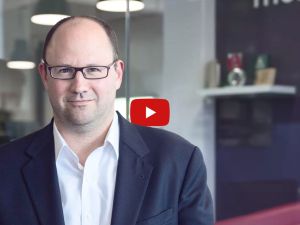Many people new to financial markets often begin by looking for specific stocks, promising sectors, or trending opportunities to invest in. In the popular imagination, legendary investors are seen as those who spot undervalued areas, master market timing, and possess an almost instinctive ability to find great deals.
While that may hold true for a few legendary investors, market data and history show that what truly drives long-term outcomes isn’t a single tactical move, but rather the overall structure of an investor’s portfolio – their financial “container.” This process, known as asset allocation, involves determining how to divide investments across different asset classes to create a balanced and effective portfolio.
One of the most common assumptions behind asset allocation recipes is that equities can significantly grow your investments, but they’re more unpredictable. Bonds offer stability, but may grow less. Cash is like a life jacket, ready to be used in emergencies. In short, each asset class reacts differently to the same economic events and plays a specific role in balancing risk and return within a portfolio.
Keyword diversification
This investment strategy – distributing investable capital across different asset classes, sectors or geographical areas in order to optimise the risk-return profile – is known as diversification, and it’s at the heart of our approach. Diversifying globally, both across and within asset classes, helps ensure that our clients’ exposure remains efficient and well-balanced. Think of it like a well-built team: not every player needs to perform at their peak all the time – as long as others step up when needed, the team stays on track. In the same way, a diversified portfolio is designed so that if one area underperforms, others can help cushion the impact and support overall returns.
Diversification is at the heart of our portfolio construction process. We diversify globally, across asset classes and within them, to offer our clients efficient, well-balanced exposure – while keeping costs under control.
When investing, keeping costs low is essential. Markets are unpredictable, but costs are one of the few variables that remain constant – both measurable and manageable. A wide range of charges can apply to an investment, from management and advisory fees to trading costs and other ancillary expenses. While a slightly lower fee may seem negligible in the short term, costs – like returns – compound over time. Consistently minimising them year after year can have a significant impact on long-term outcomes.
Trading costs, in particular – those incurred when buying and selling individual assets – deserve careful attention. A long-term strategy naturally limits the frequency of transactions, helping to keep these charges in check. That’s why a well-constructed, stable asset allocation not only supports resilience across market cycles, but also helps avoid unnecessary costs that can quietly erode performance.
For more on how we manage rebalancing to keep costs under control, read our related insight: Our strategy for reducing costs.
A process driven by expertise
Multiple academic studies – including those by Brinson, Hood and Beebower – have shown that around 90% of a portfolio’s long-term return variability can be explained by asset allocation choices (and therefore by diversification), while only a small portion is attributable to individual security selection or market timing.
In other words, rather than focusing solely on picking the “right stock” or timing the “perfect moment”, it’s more important to build a solid and consistent portfolio structure from the outset and stick with it over time.
Behind every asset allocation decision lies the work of our Asset Allocation Team, a team of professionals who monitor the markets daily and assess both risks and opportunities. Their analysis is reviewed and validated by the Investment Committee, which has the final say on the strategic and tactical choices applied to our clients’ portfolios.
Every portfolio we offer is the result of a rigorous process: we use quantitative models to estimate returns and correlations between assets, combine these with qualitative assessments, and test each decision through probabilistic scenarios and stress tests.
The goal is to ensure that our portfolio structure is resilient across a wide range of scenarios. The final allocation is the outcome of a structured debate and is continuously monitored over time to ensure it remains consistent.
Looking ahead
Building a solid, well-diversified portfolio is the first key step to helping you reach your financial goals. But we don’t stop there.
Our strategic decisions are based on long-term forecasts, but we know that markets rarely move in straight lines. There can be ups and downs, sudden changes and new scenarios to navigate.
That’s why we constantly monitor market conditions and, when necessary, make tactical adjustments. Our aim is to contain risks during complex periods and seize opportunities during favourable ones – always in line with the investor’s risk profile, and with a constant eye on portfolio turnover. In fact, investors often tend to overmanage their portfolios – something that rarely adds value and often comes with unnecessary costs.
In short: we start with solid foundations, but remain flexible to support you over time, whatever the markets may bring.
Two levels of asset allocation
In our process, we distinguish between two levels of asset allocation: one focused on the short-to-medium term, and one on the long term.
- Strategic Asset Allocation (SAA): This defines the ideal mix of asset classes over the long term. It’s based on macroeconomic expectations, return forecasts, and structural risk assessments.
- Tactical Asset Allocation (TAA): This allows us to adjust portfolios over the short to medium term in response to market changes, monetary policy shifts, or economic data. It helps us seize opportunities and manage risk when the landscape changes quickly.
Both approaches are essential. Even though it may seem counterintuitive, making accurate long-term forecasts is often easier. Predicting the inflation rate two years from now, on the other hand, is much more complex, as short-term shocks can heavily influence outcomes in some economies. Building robust, diversified portfolios is the cornerstone of our asset allocation work.
Still, we base our strategy on the assumption that over time the economy will grow – and with it, financial markets. This dual approach – strategic and tactical – allows us to stay committed to our clients’ long-term goals, while maintaining the flexibility needed to adapt to a constantly changing world.
Why this matters to you
The value of asset allocation is practical and personal. A portfolio built with careful attention to diversification and calibrated to an investor’s risk profile is more likely to weather difficult periods and capture opportunities in favourable ones.
Having an effective asset allocation also means avoiding unnecessary costs, emotional decisions and impulsive changes, which often undermine long-term returns. It’s the compass that helps investors stay on course, even when markets feel turbulent.
As with all investing, your capital is at risk. Past performance and forecasts are not a reliable indicator of future performance. Tax treatment depends on your individual circumstances and may be subject to change in the future.
*As with all investing, financial instruments involve inherent risks, including loss of capital, market fluctuations and liquidity risk. Past performance is no guarantee of future results. It is important to consider your risk tolerance and investment objectives before proceeding.





